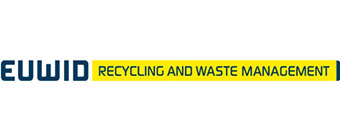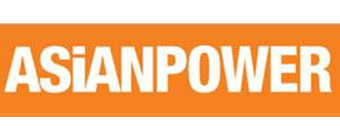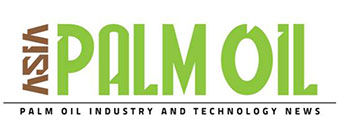400+Global High Level Attendees
50+Renowned High Level Speakers
40+Selected Exhibitors Onsite
30+Local Municipalities
100+Biomass & WtE Investors and Operators
30+EPCs
15+RDF Producers
80+Sugar,Pulp and paper,Palm oil mill
20+Biomass pellet producers
Broaders solid waste series event was originated from the urban waste incineration power generation technology application seminar held in Shenzhen in 2004. It was held in Tianjin and Shanghai in 2005 and 2006 respectively. It was upgraded to the Asia Waste to Energy Congress in 2012 and moved to ASEAN in 2023 as the ASEAN Waste to Energy Week in Bangkok, Thailand,ASEAN Waste-to-Energy Week 2024 in Saigon Vietnam,Arab League Solid Waste Management Summit 2024 in Cairo Egypt. The conference attracted more than 4,200 delegates from more than 80 countries and regions including China, United States, France, Sweden, Austria, Finland, Norway, Iceland, Denmark, Poland, Czech Republic, Germany, Austria, Switzerland, Russia, Ukraine, United Kingdom, Ireland, Netherlands, Belgium, Italy, Spain, Portugal, Thailand, Japan, Singapore, South Korea, Malaysia, Australia, India, Indonesia, Philippines, Vietnam, United Arab Emirates,The Kingdom of Saudi Arabia,The Kingdom of Bahrain,Egypt,South Africa,The Kingdom of Morocco, Iran,The Islamic Republic of Pakistan,Bangladesh,Lebanon, Canada, Sri Lanka, South Africa, Hong Kong, Taiwan, Macau etc attended the conference. Previous participants have visited Beijing Lujiashan Shougang Biomass Waste Incineration Power Plant in 2014, Suzhou Everbright Waste Incineration Power Plant in 2015, Shanghai Environment Laogang Waste Incineration Power Plant in 2016, Shenzhen Energy Yantian Waste Incineration Power Plant in 2019, Guangzhou Third Resource Thermal Power Plant in 2021,Shenzhen Energy Longgang Energy Ecological Park in 2021,Bangkok BMA C&G Waste-to-Energy Power Plant in 2023,Everbright International's Can Tho Waste-to-energy Project in Vietnam in 2024.
Asia Waste to Energy Congress 2012 was held successfully in Pullman Shanghai Skyway Hotel from 15th-16th Nov 2012
2nd Annual Asia Waste to Energy Congress 2013 was held successfully in Pullman Shanghai Skyway Hotel from 24th-25th Sep 2013
3rd Annual Asia Waste to Energy Congress 2014 was held successfully in Renaissance Beijing Capital Hotel from 22nd-23rd Oct 2014
4th Annual Asia Waste to Energy Congress 2015 was held successfully in Pullman Shanghai Skyway Hotel from 24th-25th Sep 2015
5th Annual Asia Waste to Energy Congress 2016 was held successfully in Pullman Shanghai Skyway Hotel from 28th-29th Sep 2016
6th Annual Asia Waste to Energy Congress 2017 was held successfully in Pullman Shanghai Skyway Hotel from 30th Nov-1st Dec 2017
7th Annual Asia Waste to Energy Congress 2019 was held successfully in Saint Regis Shen Zhen Hotel from 28th Jun-29th Jun 2019
8th Annual Asia Waste to Energy Week 2021 was held successfully in Four Points Sheraton Guang Zhou Hotel from 27th-28th Sep 2021
Inaugural Asia Hazardous Waste Treatment Congress 2016 was held successfully in Pullman Shanghai Skyway Hotel on 27th Sep 2016
2nd Asia Hazardous Waste Treatment Congress 2017 was held successfully in Pullman Shanghai Skyway Hotel on 28th-29th Nov 2017
3rd Asia Hazardous Waste Treatment Congress 2018 was held successfully in InterContinental Nanjing Hotel on 26th-27th Sep 2018
4th Annual Asia Hazardous Waste Treatment Congress 2019 was held successfully in The Sofitel Nanjing Galaxy Hotel on 7th-8th Nov 2019
5th Annual Asia Hazardous Waste Treatment Congress 2020 was held successfully in Hilton Jinan South Hotel on 24th-25th Sep 2020
Asia Food Waste Treatment Congress 2019 was held successfully in Saint Regis Shen Zhen Hotel on 26th June 2019
ASEAN Food Waste Treatment Congress 2023 was held successfully in Hilton Sukhumvit Bangkok Hotel on 16th Oct 2023
Asean Waste to Energy Week 2023 was held successfully in Hilton Sukhumvit Bangkok Hotel on 18th-20th Oct 2023
Asean Waste to Energy Week 2024 was held successfully in Pullman Saigon Centre Hotel on 14th-16th Mar 2024
Arab League Solid Waste Management Summit 2024 was held successfully in Fairmont Nile City Cairo Hotel on 27th Jun 2024
The Broaders 22nd Edition Solid Waste Event Will be Scheduled on 27th-28th Nov 2024 in Bangkok Thailand
Asean Biomass Utilization Congress 2024 Event Background
Thailand has launched a full-fledged effort to adopt biomass as a major future energy source, a drive that has received a boost from companies looking for relief from skyrocketing fossil fuel prices.Thailand took up the bio-circular-green economic model a year ago as a way to revive its pandemic-battered economy. The idea is to promote new industries on the foundation of the country��s dominant agricultural sector. Biomass energy relies on the burning of plant matter instead of fossil fuels.Thailand is a major producer of rice, sugar cane and cassava. The government estimates that 40 million tons of biomass is unused in a given year. Prime Minister Prayuth Chan-ocha has pledged to ��maximize the revenue from agriculture and reduce waste and the use of fossil fuels.��
With electricity demand rising annually in Thailand, the Thai government is committed to a more sustainable energy future, with renewables making up a bigger share of the energy mix. Small-scale biomass gasification plants, which generate electricity from agricultural and wood processing waste, have the potential to increase energy autonomy in rural communities, and the country as a whole, while reducing carbon emissions.
Malaysia will focus on using biomass created by the palm oil industry as a feedstock for new and advanced fuels, Deputy Minister of Investment, Trade and Industry, YB Liew Chin Tong, said May 2.The government is looking to bolster the biomass sector by attracting investments and to see biomass as "a necessary enabler for new and high value-added industries," the minister said at an event by the Malaysian Investment Development Authority.Malaysia, the world's second-largest producer of palm oil, has also made efforts to drive investments into palm oil byproducts as part of its national economic plan called the 12th Malaysia Plan to be implemented between 2021 and 2025, which has outlined biomass as a strategic sector.However, slow investments since 2019 have challenged efforts to fully utilize its biomass potential, chairman of the Malaysian investment authority, Tan Sri Sulaiman Mahbob, said at the event May 2.Due to the trend of fluctuating investments in the biomass sector since 2019, we have not met our ambitious target of MR10 billion ($2.1 billion) as set in the 12th Malaysian Plan, Mahbob said.Currently, the sector has attracted investments worth MR222.9 million, according to recent estimates by the Malaysian Palm Oil Board.Malaysia churns out about 90 million mt of solid biomass like empty fruit bunches, mesocarp fiber, kernel shells, fronds and tree trunks when producing over 18 million mt of palm oil annually, according to studies by the MPOB.Traditionally, mesocarp fiber and shells have been used by Malaysian palm oil mills as an energy source but much of the solid biomass is disposed off.In the last few years, liquid byproducts of palm oil extraction, such as palm fatty acid distillate and palm oil mill effluent, have also seen rising demand from biofuel producers as EU regulations incentivize the use of waste feedstocks for making biodiesel.
Malaysia, in a progressive stride towards addressing environmental concerns, has launched the National Biomass Strategy Action Plan 2023-2030 (PTBN2030). The scheme, as outlined by Deputy Prime Minister Datuk Seri Fadillah Yusof who also holds the portfolio of Minister of Plantation Industries and Commodities, is built on a dynamic ecosystem that integrates planning, regulation, and reassessment of the biomass sector along with supply and market demand considerations.The PTBN2030 resonates with three of the six pillars of Malaysia's MADANI foundational policy: sustainability, well-being, and benevolence. The plan embodies the economic circular concept, aiming to significantly reduce greenhouse gas emissions. This initiative aligns with the 12th Malaysia Plan (RMK12), which underscores the importance of the biomass industry in enhancing export value.The strategy also encompasses the implementation of co-firing projects in power stations, a process that involves blending coal with biomass pellets. This innovative approach is set to contribute significantly to Malaysia's sustainable energy goal of achieving a 70% power generation energy mix by 2050. An additional component of the PTBN2030 is the proposed establishment of a Biomass Hub, intended to centralize and organize the collection of raw biomass materials. The government expects this strategic move to streamline the nation's biomass supply chain effectively.In conclusion, the Malaysian government believes that with robust support from all stakeholders, the biomass sector will serve as a catalyst for the national economy. It is expected to create job opportunities, boost household income, particularly for small-scale farmers, and contribute significantly to the nation's sustainable energy agenda.
The prospects of biomass energy in Cambodia��s market are looking increasingly promising as the country continues to develop and modernize its economy. With a population of over 16 million people and a rapidly growing industrial sector, Cambodia is in need of sustainable and reliable energy sources to support its development goals.One of the main drivers behind the push for biomass energy in Cambodia is the country��s abundant supply of biomass resources. According to a study by the United Nations Development Programme (UNDP), Cambodia has the potential to produce up to 10 million tons of biomass per year, which could generate around 2,500 megawatts of electricity.This is a significant amount, considering that the country��s total installed power capacity currently stands at around 2,208 megawatts. The majority of Cambodia��s biomass resources come from agricultural waste, such as rice husks, corn cobs, and sugar cane bagasse, which are readily available in the country��s rural areas.Another factor contributing to the growth of biomass energy in Cambodia is the government��s commitment to promoting renewable energy sources. In recent years, the Cambodian government has implemented various policies and initiatives aimed at increasing the share of renewable energy in the country��s energy mix.The National Strategic Development Plan (2014-2018), for example, set a target of increasing the share of renewable energy in the country��s total installed power capacity to 20% by 2020. Moreover, the government has also introduced a feed-in tariff scheme for renewable energy projects, which provides financial incentives for investors in the biomass sector.The benefits of biomass energy in Cambodia extend beyond simply providing a sustainable source of power. By utilizing agricultural waste as a source of energy, the biomass sector can help to reduce the environmental impact of waste disposal and contribute to the country��s efforts to combat climate change.Additionally, the development of biomass energy projects in rural areas can create employment opportunities for local communities and promote economic growth in these regions.In conclusion, the prospects of biomass energy in Cambodia��s market are undoubtedly promising, with the potential to provide a sustainable and reliable source of power for the country��s growing economy. By addressing the challenges facing the sector and capitalizing on the abundant biomass resources available, Cambodia can become a regional leader in the development and utilization of biomass energy.This will not only contribute to the country��s energy security and environmental sustainability but also promote rural development and create new economic opportunities for its people.
Myanmar �C an agricultural country, covering 45% of the area with forest,production over 20 million tons of paddy annually,major biomass sources �C the forest and agricultural sector,rice husk, rice straw, bagasse, corn cob and cassava stalk,rural residents (70%) dependent on solid biomass fuels,approximately 65% of the total energy consumption from biomass sources,total capacity potential from biomass and biogas at 6899 MW and 4741 MW.
Key Features How to establish an economically sustainable integrated industrial chain of "purchasing, storage and utilization" of biomass raw materials, fully realizing the commercialization of biomass energy and increasing its added value
How to attract social investment and increase rural income
How to improve the overall efficiency and economy of the system
Construction of biomass power generation standard system
How to improve technology and explore new models to control pelleting fuel costs
In terms of environmental protection, project scale and initial investment, operational benefits
R&D and promotion of diverse technologies for biomass energy utilization
Development and utilization of active biomass energy
Classify and rationally utilize dry and wet biomass resources, focus on research and development,and prioritize breakthroughs in some key technologies
How to realize the clever collaborative utilization of biomass energy and wind and solar energy
Debate the future of the biomass utilization market with industry leaders
Benefit from technical expertise insight from some of the industry��s leading technology providers
Network and do business with the leading biomass projects owners in the Asean countries Discover new commercial opportunities in 2026 and beyond
Position your company at the forefront of the emerging biomass industry in the Asean region
Asean Solid Waste Management Congress 2024 Event Background
Thailand has a total of 2,700 landfills in the country.There were several complicated conditions and regulations that were a barrier to developing a waste-to-energy sector in Thailand during 2012-15.
The ERC has since amended several laws and conditions to create more potential for waste-to-energy business.The new PDP allows the regulator to adopt business models and development conditions to license private investors.The ERC consider the business model and capacity in providing two types of licences: small power producer at a capacity between 10-99MW and very small power producer for less than 10MW.Power purchase agreements is for a period of 20-25 years and the state grid has plans to buy power from this renewable resource.Licence holders have to comply with a single rule: quick development during a stipulated time frame to avoid any delays and postponement.The MEA oversees waste-to-energy projects in Bangkok,Nonthaburi and Samut Prakan, while the PEA supervises the remaining 73 provinces.
The first phase of waste-to-energy, with combined capacity of 344MW, ran from 2016 to 2020. Community waste was used to produce 313.2MW of electricity while industrial waste was used to produce 30.8MW.Part of the waste fuel was used to produce heat which was supplied to factories, especially for food processing and cloth dyeing. The heat volume stood at 135 kilotonnes of oil equivalent.
The second-phase development consists of 34 projects to be operated by small power producers, each with an electricity generation capacity of 10-50 megawatts, and very small power producers, each with less than 10MW in capacity.Total capital expenditure is estimated at 50 billion baht for the development of the projects, with a combined capacity of 282.98MW.Authorities' target is for 600MW of electricity to be produced under the second phase of the waste-to-energy scheme, with 200MW from industrial waste and 400MW from community waste.The ERC help local administrative bodies deal with waste in their areas through the waste-to-energy scheme.The Interior Ministry oversees local administrative bodies nationwide, supports the scheme under its cooperation with the Energy Ministry. The scheme gained approval.Authorities are encouraging investors to join the scheme by offering them feed-in tariffs ranging from 1.81-5.08 baht per kilowatt-hour over 20 years.The ERC expects waste-to-energy projects to start commercial operations between 2025 and 2026.
According to the Ministry of Interior's Department of Local Administration (DLA), 79 waste-to-energy projects are planned nationwide, which will have a combined power generation capacity up to 619 megawatts and be capable of incinerating up to 33,006 tonnes of waste per day.Of them, 22 projects are still at the consideration process, and 11 projects have been operating since 2019 as part of a waste-to-energy investment promotion scheme under the Quick Win Project.Meanwhile, nine new waste-to-energy projects and 12 new refuse-derived fuel (RDF) plants under the DLA's plan will be ready for operation within the next three years, after the national energy policy board approved an agreement to start buying power from the plants in 2025.
The Interior Ministry and the Ministry of Natural Resources and Environment has designated areas for waste-to-energy projects in 24 provinces: Ayutthaya, Buri Ram, Chiang Mai, Chon Buri, Khon Kaen, Krabi, Loei, Lop Buri, Maha Sarakham, Nakhon Phanom, Nakhon Ratchasima, Nakhon Sawan, Nonthaburi, Pathum Thani, Phatthalung, Phitsanulok, Phuket, Rayong, Samut Prakan, Songkhla, Surin, Ubon Ratchathani, Udon Thani and Yala.
Pinsak Suraswadi, director-general of the Pollution Control Department (PCD) under the Ministry of Natural Resources and Environment, said authorities are not just focused on incineration at waste-to-energy plants, but considering how the national action plan can manage municipal solid waste and plastic waste.
The Malaysia government announce the extension of the first phase of the National Energy Transition Roadmap (NETR), known as Phase 2, which will focus on biomass,waste-to-energy usage,carbon capture and storage (CCS), and hydrogen integration, among others.
The Ministry of Housing and Local Government (KPKT) has identified 18 locations for the development of solid Waste-to-Energy (WTE) plants throughout Malaysia as a new method of solid waste management to eradicate landfills.Minister Nga Kor Ming said the development of the plants will use the latest and advanced technology that has been proven successful in several European countries besides China and Japan.The direction of the ministry in the future is that we are now working very hard to turn thrash-to-cash and also to turn rubbish-to-energy. This will be the direction of the government to ensure that not only are we environmentally friendly, the garbage that has already been thrown away can be turned into renewable energy,�� the minister said.
There are some waste to energy projects are undergoing in The Kingdom of Cambodia,Myanmar,Lao PDR.
Key Features How to shorten the project preliminary examination planning,environmental assessment,feasibility study, approval,land approval,report construction land acquisition,demolition and resettlement coordination time
How to coordinate finance,development and reform,land,planning,environmental protection,legal departments efficiently
How government and investors resolve the conditions for cooperation in fairness and impartiality, major legal risks, and operational maintenance effectively
How to promote the project quickly during a stipulated time frame to avoid any delays and postponement
How to design a YIMBY waste incineration project, process technology, project building standard, waste disposal service fee
How to build safe,high standards, high quality waste incineration power generation project
How to leverage cloud computing, digitization, big data, artificial intelligence, and IoT technologies to improve combustion power generation efficiency and reduce flue gas emissions
Waste incineration power generation projects operational excellent management
Waste incineration power plant equipment fault prediction and maintenance,clean compliance incineration, improve enterprise economic benefits
How to assist waste incineration power plants to treat exhaust gas(hcl sox nox pm dioxin mercury), waste leachate,slag,bottom ash,fly ash
How to assist decision makers in urban msw management departments to sort and collect transport work well
Debate the future of the emerging waste management market with industry leaders
Benefit from technical expertise insight from some of the industry��s leading technology providers
Network and do business with the leading wte projects owners in Thailand,Malaysia,Cambodia,Myanmar,Laos
Discover new commercial opportunities in 2026 and beyond
Position your company at the forefront of the emerging WtE industry in Thailand,Malaysia,Cambodia,Myanmar,Laos
|






































































































